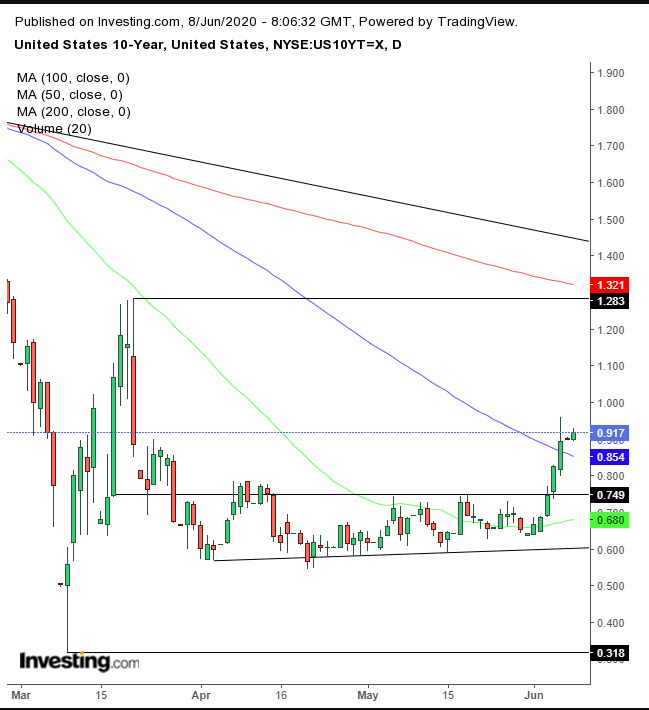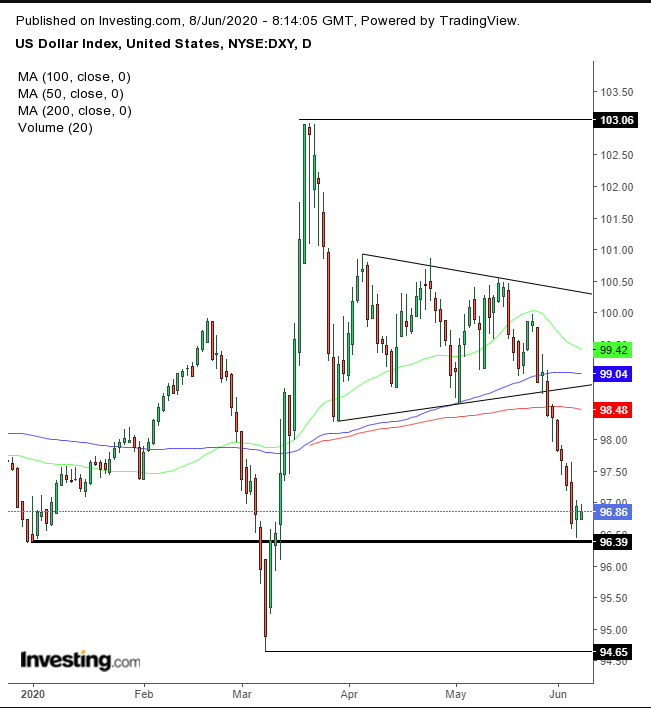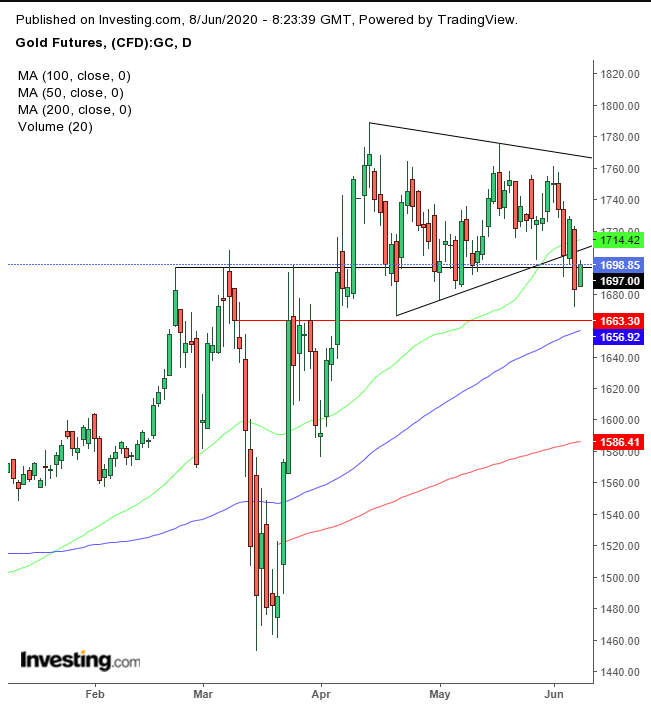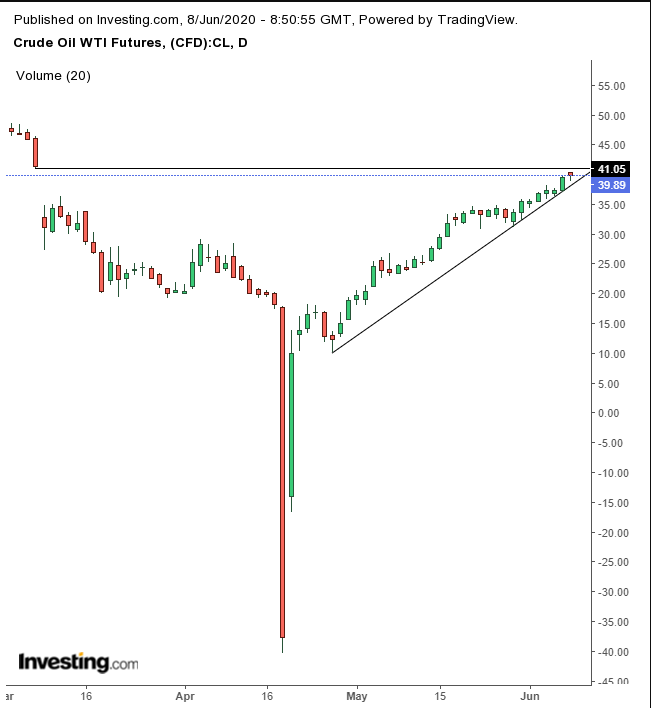- Traders question whether equities have gone far enough
- OPEC+ extended production cuts, but will markets trust all cartel members
- Will the Fed talk up the economy or stimulus on Wednesday?
Key Events
US futures for the S&P 500, Dow Jones, NASDAQ and Russell 2000 were all off session highs on Monday, while European shares opened lower. Asian indices had a mixed showing this morning as traders try to figure out if exhaustion had set in after last week's most exuberant rally in years.
Yields climbed, pulling the dollar up. At the same time, gold found its footing.
Global Financial Affairs
Contracts on major US indices trimmed an earlier advance but remained slightly higher. Futures on the NASDAQ 100 are signaling that the underlying benchmark could see a record close during today's Wall Street session, following Friday’s all-time high. This optimism comes on the heels of improving economic data, including last week's nonfarm payrolls release which surprised significantly to the upside. It helped bolster the case for a quick economic recovery ahead of this week's Fed decision.
Markets are now focused on the Fed’s meeting this week as well as the Wednesday policy decision and statement, including the US central bank's first official economic projections this year. Investors will want to get feedback on Friday’s astounding data turnaround, which went from an expectation of an additional 9 million jobs lost to the shocking addition of 2.5 million jobs.
Will the Fed hint at a potential rate increase this year? That would put traders in the uncomfortable position of deciding whether to root for confirmation of the vaunted V-shaped recovery, hopes for which have spurred them to push stocks so hard and so high. Or, would it be preferable to wish for lower rates instead?
The challenge for the Fed: finding that ellusive balance between pitching the economy or its stimulus; wealth creation vs a Fed creation as it were.
“Markets have responded positively to falling infection rates in the major economies, and signs of increased consumption as countries emerge from lockdown,” Gavekal Research analysts wrote in a weekend note.
“But by buying at present valuations, investors appear to be pricing in a perfect Keynesian recovery in the second half of the year.”
This morning, technology and healthcare shares dragged the Stoxx Europe 600 Index into negative territory.
The huge NFP surprise on Friday—which also included a better-than-expected unemployment rate figure—created an upside gap for the S&P 500 Index

Will it prove the start of a new move toward the Feb. 19 record, which is 6% away, or will a downside gap complete an Island Reversal instead, as an overbought RSI might suggest?
Yields, including for the 10-year Treasury note, climbed for the sixth day, extending a selloff after Friday's BLS numbers.

From a technical perspective, rates escaped a range via its topside. However, the sustained technical significance of the breakout remains unclear even though it included support off the 50 DMA and penetration of the 100 DMA, when the prior move was both lower—to the 0.31 March low, and higher—to the March 20 high of 1.28. Note: the 200 DMA looms right above that high, backed up by the long-term downtrend since the November 2018 high.
The dollar slipped after two days of gains following a six-day selloff.

The USD’s chart shows the same sharp whipsaw before its recent jump, making any predictive statements suspect.
The unexpectedly good jobs report pushed gold below a key support formed by multiple patterns.

The MACD and the RSI reinforce the price patterns’ failure, but the ROC still gives it hope. We would consider $1,660 as our red line, the level where prices found resistance in March, but then later flipped to support with the development of the symmetrical triangle whose integrity is now in question, after prices fell below it on Friday.
WTI jumped at the open, moving above $40 as OPEC+ extended production cuts, with Iraq and Nigeria promising to make up for missing their targets.

Technically, oil is struggling from below the $40 mark, and if prices close at these levels, it will demonstrate the round number as a psychological resistance. Should this occur, trading will have formed a hanging man, bearish upon confirmation of a lower close—all below the resistance of the March 9 falling gap.
Up Ahead
- New York City will begin re-opening after recording its first day with no virus fatalities since March. India starts a phased lifting of its nationwide lockdown. The Netherlands and Belgium plan to open bars and restaurants. New Zealand says it has eliminated transmissions of the virus and will remove remaining restrictions.
- ECB President Christine Lagarde attends a European Parliament hearing Monday.
- The Fed’s next policy decision is Wednesday. Officials are expected to leave rates above zero.
- OECD releases its economic outlook Wednesday, a twice-yearly analysis of the economic prospects of member countries
- Euro-area finance ministers meet Thursday to discuss the EU’s recovery package and Eurogroup presidency succession.
- Golf’s PGA holds its first tournament since the coronavirus lockdowns—the Charles Schwab Challenge in Fort Worth, Texas which begins on Thursday.
- The Spanish soccer league La Liga resumes play on Friday.
Market Moves
Stocks
- The Stoxx Europe 600 Index dipped 0.7%.
- Futures on the S&P 500 Index were little changed.
- Germany’s DAX dipped 0.9%.
- The MSCI Asia Pacific Index advanced 0.7%.
Currencies
- The Dollar Index dipped 0.2%.
- The euro was little changed at $1.1294.
- The British pound climbed 0.2% to $1.2692.
- The Japanese yen strengthened 0.1% to 109.50 per dollar.
Bonds
- The yield on 10-year Treasuries increased two basis points to 0.91%.
- Germany’s 10-year yield fell less than one basis point to -0.28%.
- Britain’s 10-year yield dipped one basis point to 0.344%.
- Australia’s 10-year yield was unchanged at 1.101%.
Commodities
- Brent crude advanced 1.3% to $42.86 a barrel.
- Gold strengthened 0.6% to $1,695.09 an ounce.
- Iron ore surged 5.3% to $102.65 per metric ton.
